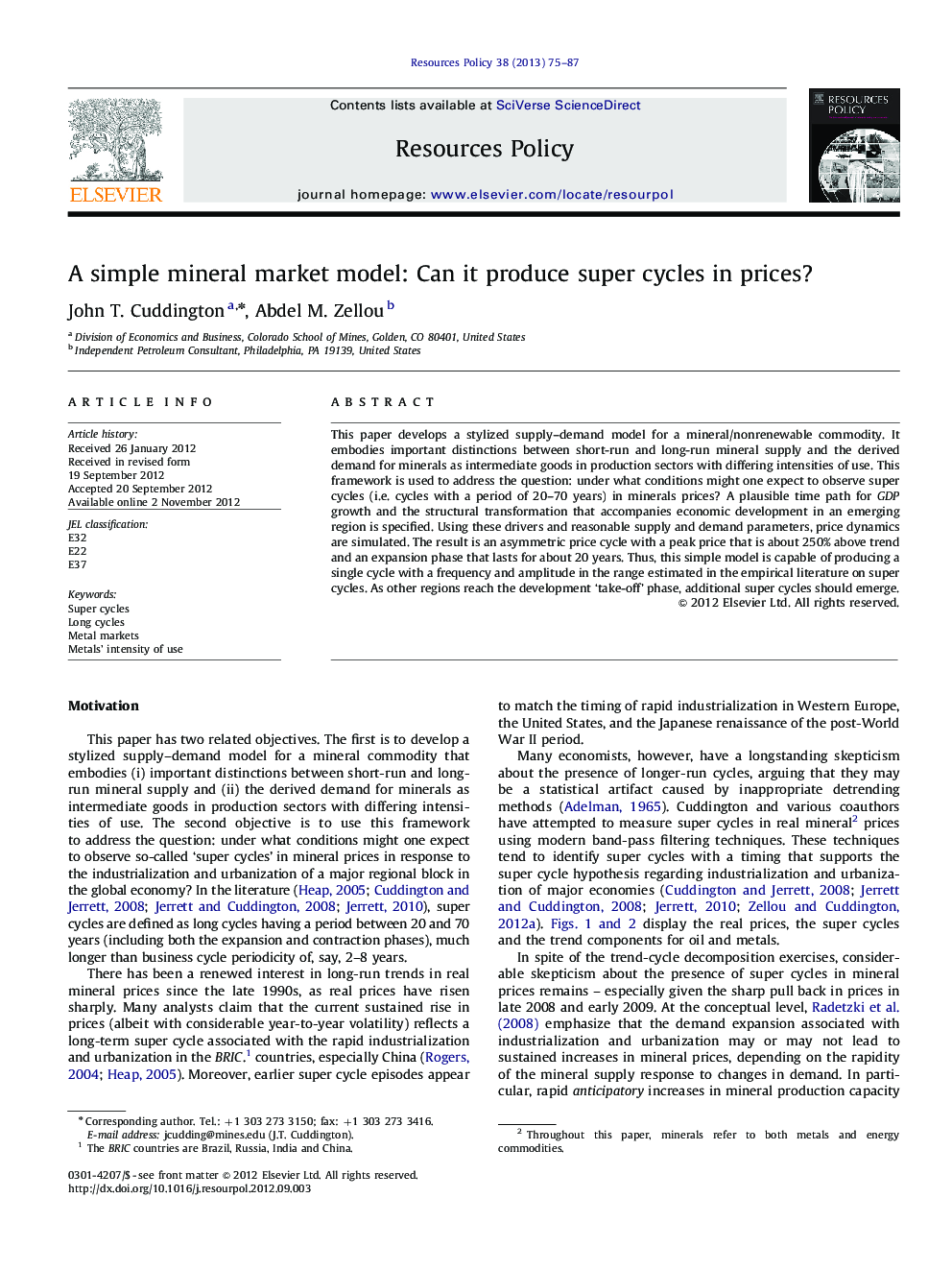| Article ID | Journal | Published Year | Pages | File Type |
|---|---|---|---|---|
| 986321 | Resources Policy | 2013 | 13 Pages |
This paper develops a stylized supply–demand model for a mineral/nonrenewable commodity. It embodies important distinctions between short-run and long-run mineral supply and the derived demand for minerals as intermediate goods in production sectors with differing intensities of use. This framework is used to address the question: under what conditions might one expect to observe super cycles (i.e. cycles with a period of 20–70 years) in minerals prices? A plausible time path for GDPGDP growth and the structural transformation that accompanies economic development in an emerging region is specified. Using these drivers and reasonable supply and demand parameters, price dynamics are simulated. The result is an asymmetric price cycle with a peak price that is about 250% above trend and an expansion phase that lasts for about 20 years. Thus, this simple model is capable of producing a single cycle with a frequency and amplitude in the range estimated in the empirical literature on super cycles. As other regions reach the development ‘take-off' phase, additional super cycles should emerge.
► A stylized supply–demand model for a nonrenewable mineral commodity is developed. ► Economic development affects intensity of mineral use in the model. ► The model is capable of generating super cycles in mineral prices.
